Sales Questions: How to Ask the Right Questions

Contents
Asking probing sales questions to accelerate deals is nothing new. In fact, its origins could be traced back to the classical Greek philosopher Socrates, who deployed the Socratic method as a form of dialogue centered around asking and answering questions to draw out ideas, stimulate critical thinking, and determine underlying presuppositions.
In short, asking the right questions can have a powerful effect in closing more deals, because selling isn’t about your product or its features, it’s about what it can do for the end user – specifically, the problems it solves or the joy it creates.
Here’s how to ask the right probing sales questions that can help you close more deals and win the day. Read on to check out when open-ended sales questions go wrong too:
What Is a Probing Sales Question?
Wouldn’t it be nice if all your prospects gave you a “cheat sheet” that outlined exactly what’s important to them? That cheat sheet would help you close more deals and, more importantly, identify the prospects who will never commit.
Unfortunately, that’s not how things work. You can always find some clues about your prospect on social media or in early email conversations, but the bulk of your intel will come from asking questions – specifically, probing questions. These types of questions are meant to expose information that a prospect wouldn’t think to lead the conversation with or may not otherwise provide at all.
A probing question is a lot like your discovery questions, but they’re more detailed. A discovery question may uncover an issue that you can use to your advantage, while a probing question helps you figure out how to get something out of it. Typically, you have to earn the right to ask probing questions by getting to know the prospect first.
The real potential of probing questions lies in the follow-through. It’s not enough to ask one question and leave it alone – you have to keep asking why until you uncover the real hurdles they’re facing. And you have to listen more than you talk. Don’t get caught up driving the call when the client is ready to give you the map to closing the deal.
Command the Conversation From the Beginning
Come out of the gate strong with easy questions that cannot be answered with a simple yes or no. Some great leading questions are:
“How did you hear about us?
Or
“What made you say yes to this meeting?”
Why they work: This type of ‘origin story’ is extremely important because it can often tell you exactly what the prospect wants. Remember, they aren’t interested in your product. What they care about is what it can do for them, or the end result of purchasing your product. Often, the answer to this question is a blueprint laying out precisely how to sell to them. It can tell you which features of your product to highlight and focus on, and which ones you can leave out for now.
A targeted question like the second one also tells you which concern or problem led them to take action. While they may have many reasons for reaching out, often there’s one that stands apart. Once discovered, it lets you cut to the chase and customize your pitch or demo.
Determine Your Competition
As a salesperson, you likely know better than anyone exactly what your competition lacks and how you can compete. A good example here is:
“What other companies are you comparing us with?”
Why it works: A former FBI negotiator observes that starting questions with “why” makes your prospect feel like they’re under interrogation and raises their defenses. Instead, focus on asking “what” or “how” questions such as the one above. In this situation, the question comes off as harmless and nonchalant while also being a critical component of the sales process. Knowing the competition allows you to highlight their shortcomings while promoting your company’s solutions, and ultimately lets you frame the deal so you can emerge as the most viable choice.
Single Out the Decision Maker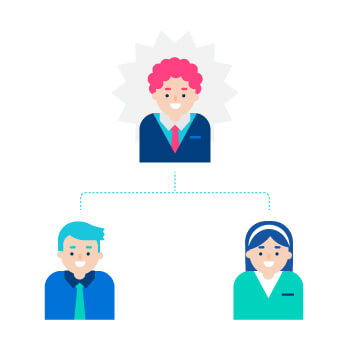
Your prospect loved your demo and seemed genuinely interested in purchasing your product. There’s only one problem – they aren’t the decision maker. Now you have to do your demo all over again and persuade another person. To flesh out different roles and single out decision makers, use questions like:
“Who will use the product?”
Or
“Who will need to approve the final purchase?”
Why they work: Hierarchy reigns supreme, especially in larger companies, and pinpointing the decision maker is crucial to accelerating deals. Even if your demo with the prospect went spectacularly well, you could be spinning your wheels if the decision maker isn’t on board. It’s best to get those people in on the action from the beginning so you aren’t duplicating your efforts. Otherwise, you could get trapped in an endless cycle of speaking to intermediaries and having no real feel for if the deal will close this month – or at all.
Another bonus to singling out the decision maker is getting a handle on how complex the deal will end up being. If the deal requires board approval or the approval of several parties, then you’ll know it could be a lengthy process and not as straightforward as you anticipated.
Pinpoint the Pain and Frustration
People buy for their reasons, not yours. Knowing that, you should figure out exactly why they are taking time out of their busy day to talk to you. Typically it’s because there’s pain or frustration in their day-to-day. Try cutting to the chase with a question such as:
“What’s frustrating about your current process?”
Why it works: This question helps you get to the root of their problem. You could follow up on what they’re saying with a question like, “You previously mentioned being frustrated by X, Y, and Z. Can you elaborate further on that?” This line of questioning is essential to diving deeper into their problem areas. Often, they’re describing a surface-level problem such as spending too much time on data entry or manual tasks, when really the reason they’re frustrated is that they want to focus more effort on growing their portfolio, or they feel overstaffed.
Asking the right questions, actually listening, and following up with thoughtful probing questions can get to the underlying problems and allow you to present additional solutions that can help close the deal even faster.
Sniff Out Problems and Issues Right Away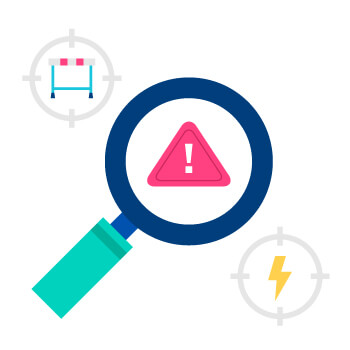
Few deals are perfect, so getting down to the objections or underlying issues quickly is the only way you can start solving the problem. Try asking a question like:
“Why do you think this challenge hasn’t been solved or addressed until now?”
Or
“Are you aware of anything that could stop this deal from going through?”
Why they work: Any veteran salesperson can tell you that sure-thing deals fall through all the time. Everyone has tangled with a premature celebration at some point in their sales career, so these questions can help prevent these unexpected downturns. It could be that budgeting is a long-term roadblock, or perhaps there are short-term hurdles that need to be cleared before moving forward. Whatever challenges arise, it’s always better to stay ahead of them from the beginning if you want to accelerate the closing of your deal.
Determine Urgency and Priorities
Ask questions about their problems, frustrations, and goals. Then ask qualifying questions to pick up the pace, such as:
“What would give you the most relief or value right now?”
Or
“What feature(s) feel most urgent at this moment?”
Why they work: As humans, we seek out instant gratification, and even the knowledge that there’s a better way or an achievable solution can lower our defenses. Prioritizing a prospect’s wish list is key to giving them that hint of instant gratification. Asking questions about what would relieve them or what’s urgent gives you the all-too-important inside knowledge needed to customize your deal and champion important problem-solving features.
Qualify Your Prospects
Nothing stalls deals more quickly than a bad product fit. To speed things up, make sure you see all angles by asking qualifying questions such as:
“What other products do you currently use that must integrate with ours?”
Or
“What does your budget look like for fixing this problem?”
Why they work: Knowing both must-haves and their budget can save both parties lots of trouble up front. It’s important not to lead with this question because you should always be talking value before price, but it should definitely be part of your initial pitch deck. It’s also worth asking when they last purchased a solution like yours. If it was recently, that’s excellent news because it means they are an active buyer and are familiar with the process. If it’s been 15 years, that could be a red flag that means it’s hard for them to make a buying decision.
Fast Track the Close
You’ve pitched, completed your demo, and battle objections. Now it’s time to ask for the sale. Here’s an example:
“Now that I’ve answered your questions and you’ve got a better understanding of what my product does, it seems as though we’re a perfect match. What steps do we need to take to make this happen?”
Why it works: It establishes buying intent, plain and simple. If they stutter, backpedal, or starting talking about how they’re locked into other contracts, then they likely aren’t serious buyers. But, if they start talking about how they need other stakeholders to sign off, then you’re in good shape. Probe a little further. Figure out if you can insert yourself to talk to other stakeholders or help in any way. If not, sit back and focus on other deals, because you’ve done everything you can do at this point.
Clarify What They Want from This Meeting
Chances are that your prospect is sick of listening to salespeople talking endlessly about how great their product is, and how many features it boasts.
It’s in your best interest to make it clear that this call or meeting will be different, and that you’re focused 100% on the prospect’s needs. Early on, ask a question like:
“What are you looking to get out of this call?”
Or
“What would make this meeting worthwhile for you?”
Why they work: Right off the bat, these questions give you a clear understanding of exactly what your prospect wants to hear. Perhaps they’re extremely detail-oriented and want to dig into specific product features. Maybe they want to hear about times you’ve helped similar companies to theirs. Or perhaps they know exactly what they’re looking for already, and just want to understand whether your product is what they need.
In turn, this allows you to plan a rough roadmap for the rest of the call or meeting.
Understand the Buying Process
If only every single business had the exact same buying process. Unfortunately, they don’t. A buying decision that takes one business a week could take a different business a month. Now’s the time to find out whether your prospect is playing the long game, or wants everything done yesterday, by asking questions like:
“When are you looking to have a solution in place?”
Or
“Can you talk me through your timeline for buying a product like this?”
Why they work: This approach is effective for two main reasons.
First, it helps you understand whether or not your prospect’s timeline is realistic. If they want a solution in place in three weeks, but your experience tells you it’ll really take three months, now’s a good time to start managing expectations and getting everyone on the same page. Agree on a few key dates, then follow up with a more detailed plan.
Second, it’s a subtle way to find out how serious they are about purchasing a product like yours. If they haven’t given a single thought to roadmapping the implementation of your product, it could be an indication that they’re not really on board. In this case, you need to spend more time relating features and benefits to your prospect’s specific pain points.
Identify Where They’ve Fallen Down Previously
As the Spanish-American philosopher George Santayana put it: “Those who cannot remember the past are condemned to repeat it.”
In other words, if you don’t understand where your prospect has slipped up before, you risk running into the same mistakes. Dig into those errors by asking questions like:
“What challenges have you previously faced when trying to solve this problem?”
Or
“What’s gone wrong in your previous attempts to deal with this?”
Why they work: Once you fully understand their past problems, you can steer clear of them this time around.
For instance, let’s say your prospect wanted to implement a similar solution in the past, but struggled to get buy-in from other key decision-makers. This would be an indication that you should reach out to those decision-makers early, identify their priorities and pain points, and ensure that they understand how your product can help.
Gauge Their Appetite for Change
It’s often said that no one likes change. Whether or not that’s true, it’s certainly the case that we often become used to problems over time. That creaking door or faulty lightbulb you planned to fix months ago is still there, because you’ve learned to live with it, and you’ve had other more pressing priorities to deal with.
Unfortunately, the pain points you’re trying to resolve for your prospect might fall into the same boat. It might seem like something that should be fixed right now, and your prospect might even agree with you that it’s a priority. But actions speak louder than words. To understand how long they’ve been dealing with this issue, ask questions like:
“Has something like this ever happened before?”
Or
“How long have you been thinking about this?”
Why they work: This is an excellent way to understand your prospect’s priorities without asking directly.
If they’ve been living with this problem for years and still haven’t gotten a solution in place, this could indicate that they’re not really serious about solving it. In that case, you should ask them why they’re speaking to you about it now. Perhaps the situation has gotten worse, or maybe they’ve just gotten signoff on some new budget, so they’re now in a position to find a solution.
Alternatively, it might mean that they simply haven’t found the right solution yet – in which case, you need to dig into why they didn’t choose any of those other products.
Accelerating your deals boils down to asking the right questions. From the beginning, you should be qualifying your prospects to make sure nobody is wasting their time. If it fits everyone’s budget and there are no dealbreaker integrations or features missing, then single out the decision maker so you can cut out the middleman and make a real impact from the start.
Next up, you should be laser-focused on finding their pain points and prioritizing them by urgency. After you’ve done that, dive deeper by asking about what competitors they’re considering, and what factors could stop the deal from going through. Finally, once you’ve exhausted all your efforts pitching, fielding questions, and handling their objections, ask for the sale. Preplan your line of questioning, remain flexible, and really listen to what they’re saying, and you’ll be on the fast track to close.
When Open-ended Sales Questions Go Wrong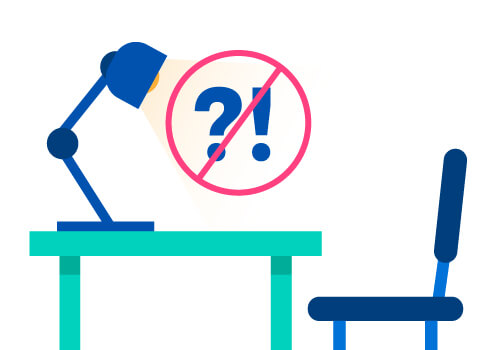
Simply replacing closed questions with open questions isn’t enough to make a sale. As with most things in life, there’s a right way and a wrong way to do it.
Here are a few tips for asking open-ended questions the right way:
Sound genuine
It’s really easy to sound forced when asking any sales question, and it’s one of the easiest ways to lose a potential customer’s trust and respect. Take a genuine interest in prospects so your questions come across as honest and natural.
Don’t interrogate
A genuine interest in what your prospects have to say is critically important. Making them feel like they’re under interrogation is a critical mistake. Keep things casual and friendly at all times.
Don’t answer your own questions
When a potential customer doesn’t respond fast enough, it’s really easy to fall into the trap of filling the silence with your own thoughts. Instead, be patient, and let prospects respond in their own time.
If the silence becomes deafening, simply move onto another question.
Actually listen
When engaged in a conversation, far too many salespeople (and people in general) focus so much on what they want to say next that they completely overlook the other half of the conversation; i.e., what the other person is saying.
If you want to be successful in sales, you have to listen, and you need to adapt your responses accordingly.
12 Open-ended Questions to Close a Sale
Ready to change how you approach closing sales? Here are 12 open-ended questions that will help you do exactly that.
1. What impact do you think this product would have on you or your business?
This question forces the prospect to think for themselves. In fact, it almost eliminates the need for you to do the closing, since it puts the onus on them instead.
Ask this question once you feel confident the prospect understands your product’s key features and benefits, and how those features and benefits apply to them. You can then leave it up to the prospect to figure out how and why your product is a fit for their business.
2. If you were to solve x problem (problem discussed in previous conversations), how would it impact you or your business?
By the time you feel ready to close a sale, you should have a solid understanding of your prospect’s primary pain points.
Assuming you do, pick their biggest pain point (so long as it’s one your product can solve) and ask them how overcoming it would impact them or their business. This will get your potential customer thinking about both the immediate and long-term benefits of resolving it.
Again, this question puts the onus on the prospect. It’s up to them to tell you how your product is going to help them.
3. Let’s say you failed to solve x problem – how do you see that impacting your business?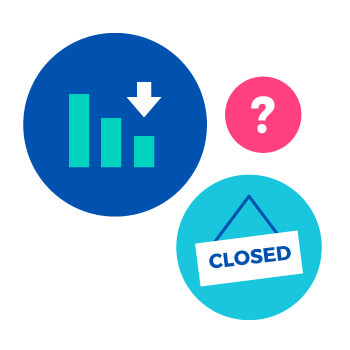
If question 2 doesn’t get results, flip it on its head.
Ask your prospect what they foresee happening if they fail to solve that same problem – whether that’s being less profitable than they could be, wasting time on tasks which could be automated, or losing indispensable members of staff.
Try to get them thinking about the worst-case scenario. This works because we’re much more likely to buy a product once we believe we’ll be worse off without it.
4. What would you be willing to invest in solving problem x?
Haven’t discussed pricing yet? This question should get you the information you need and allow you to seal the deal by agreeing on a price or pricing structure that’s both fair to the customer, and appropriate for the product you’re selling.
Use this when you know the customer’s on the verge of converting, but holding back from saying “yes” because they’re concerned about costs or stipulations in the contract.
5. What does x (i.e. competitor’s product) do that ours doesn’t?
Few products are entirely unique, so odds are each individual or corporation you talk to will be considering one or more products in addition to your own.
This means that understanding what you’re up against, and why a customer might choose a competitor’s product over your own, is key to giving you the edge (and in turn, making that sale).
Ask this question whether a potential customer has mentioned a similar product to you, or you simply have reason to believe they’re talking to a competitor. This question can help move a sale forward at all stages of the buying cycle, but it’s extra-useful if you’re on the cusp of closing and you just need to show why your product is the best choice for this prospect.
6. What’s your biggest reservation about our product?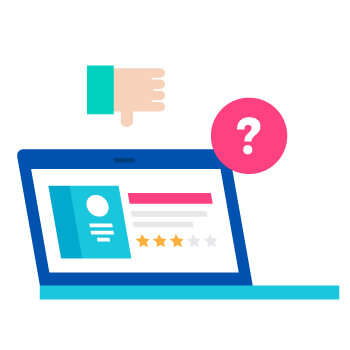
Say a lead’s interested. They don’t seem to have a problem with the pricing or the terms of the contract. You’ve demonstrated how your product can help them. But something’s holding them back. If you’re not sure what it is, ask them.
Find out what it is about your product that’s giving them pause. Once you know this, you’ll be able to overcome a key objection and hopefully close the sale.
7. What does your decision-making process look like?
The buying process can differ substantially between companies. A startup with 10 employees is going to have a very different decision-making process than a corporation with 10,000 staff members stationed across the country.
Finding out what’s involved in getting a “yes” is helpful early on in the sales cycle, but it’s an essential question to ask if you’re struggling to close.
8. What can I do to get you to say “yes” today?
So by now you’ve covered:
- Costs
- Contracts
- How your product will resolve this prospect’s specific pain points, and
- Why it’s going to do a better job of solving that pain point than anything your competitors are offering
It seems you’ve done everything right, but they’re still not saying “yes.”
What can you do next?
Simply ask the customer what you need to do to get them to say “yes.”
This one may seem like it’s verging on desperation, but when delivered correctly, it works.
Sure, the response you get might be unreasonable, and you may be unable to meet their demands. However, if you’ve got a solid lead in the palm of your hand, but you’re still not getting a “yes,” what do you have to lose by asking?
9. What’s stopping you from saying “yes” today?
So now you’ve asked “What can I do to get you to say ‘yes’ today?” But it might not leave you feeling good. Your product is awesome. You shouldn’t need to give in to a potential customer’s demands, but you’ve put that option out there, and they’re still not saying ‘yes’.
It’s frustrating, but there’s only one thing you can really do at this point – ask them why.
“What’s stopping you from saying yes today?”
There’s no guarantee that the answer you’ll get will be useful, but if you don’t ask, you don’t get.
With any luck, you’ll be told exactly what you need to know to secure the sale that day – or at least in the near future.
10. What other questions do you have for me?
Now you’ve exhausted what seems like every possible avenue. Despite the fact that you feel you’ve got a genuinely interested prospect on your hands, they’re still not playing ball.
What now?
Ask them what other questions they have for you.
Sure, this might lead nowhere. It is an open-ended question, but it’s also easy to answer by saying “I don’t have any questions for you.”
On the other hand, their answer might reveal something you can leverage in order to get that sale.
11. What do you want to happen next?
Let’s say you know this prospect wants your product, but they’re still not saying “yes.”
Why not try asking them what they want to happen next?
Maybe they just want to be in the driver’s seat. If you can roll with the punches and let them take control, you may finally get that “yes” you’ve been after.
12. When can we begin working together?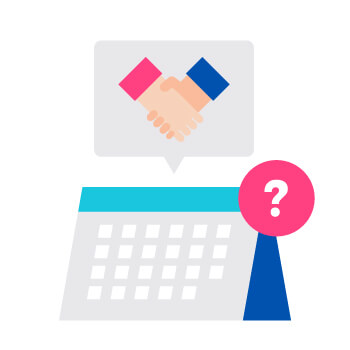
This one’s a classic closing question, and one that’s arguably overused. In the right context however, it makes perfect sense.
Why?
Because it’s simple, direct, and gets things moving. And isn’t that what you’re really after?





